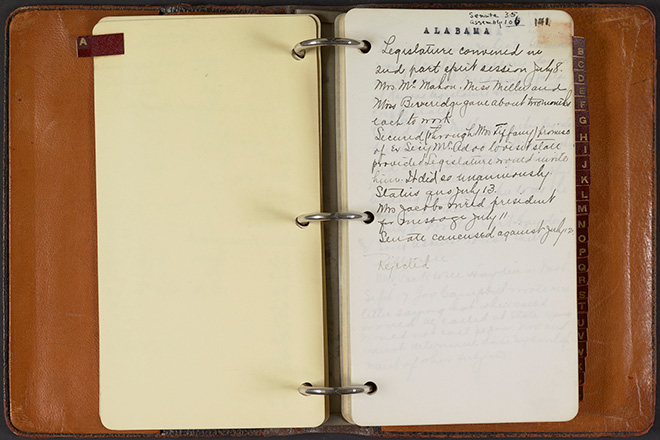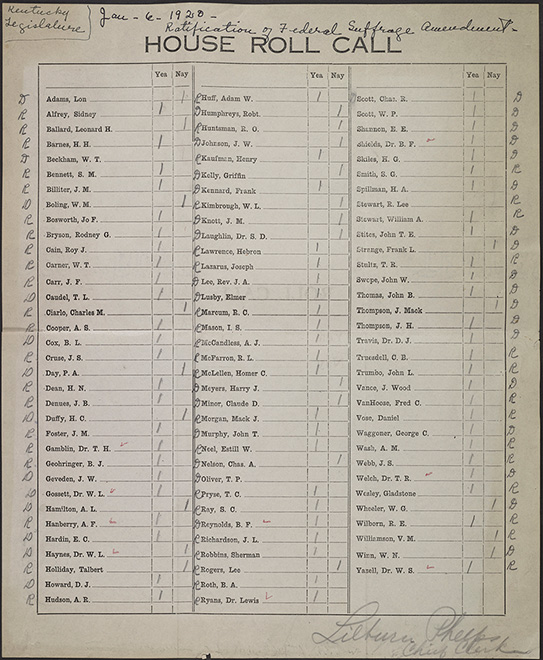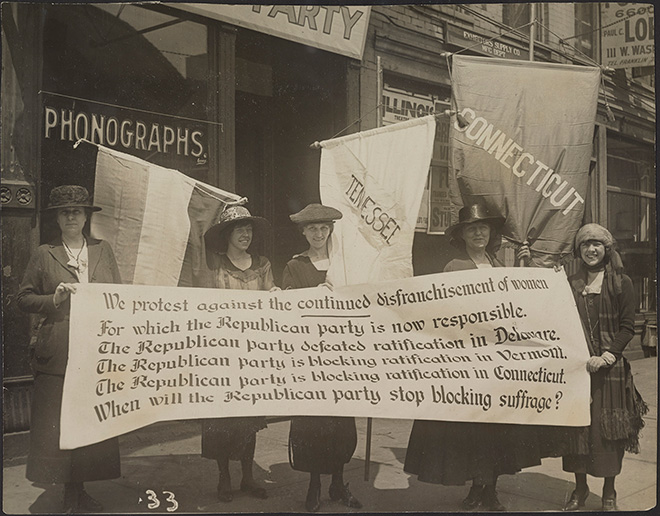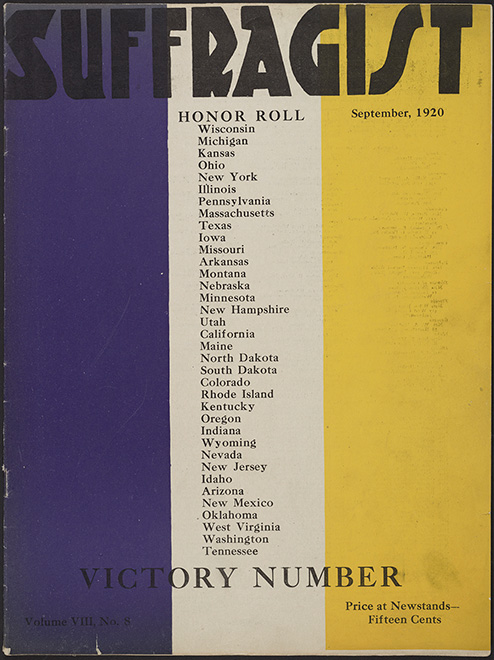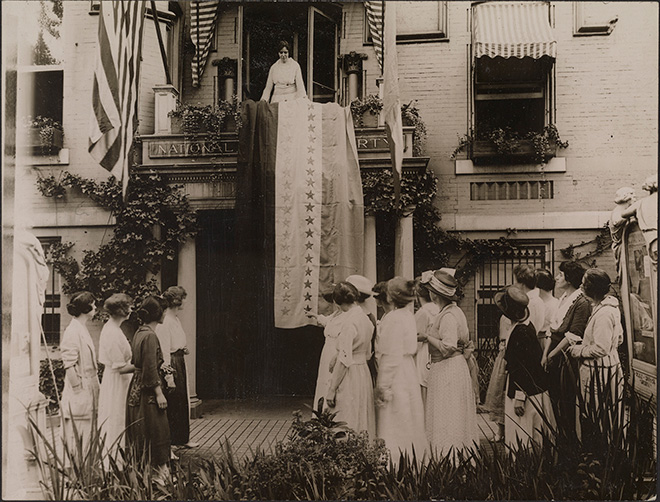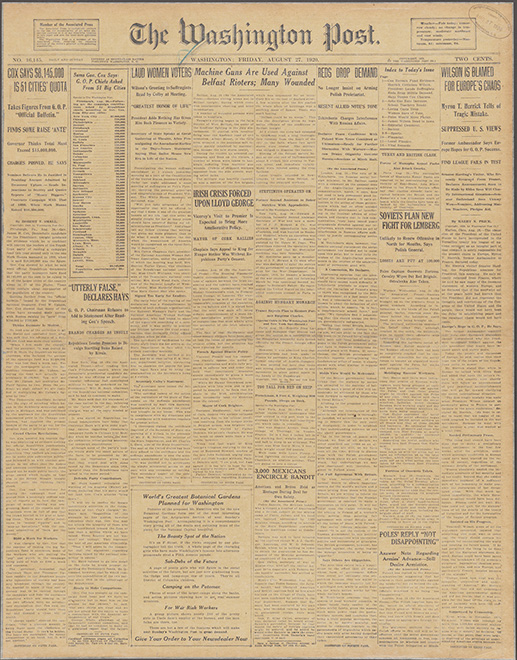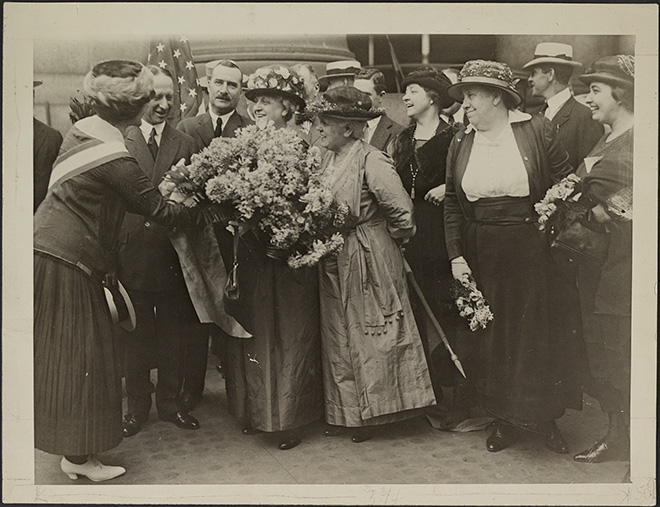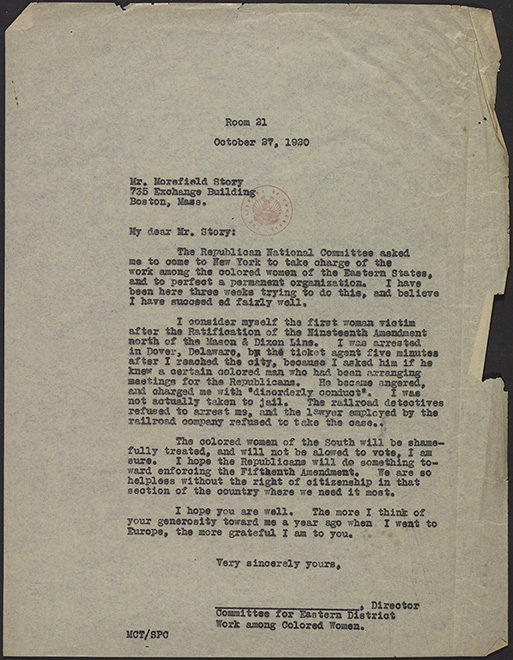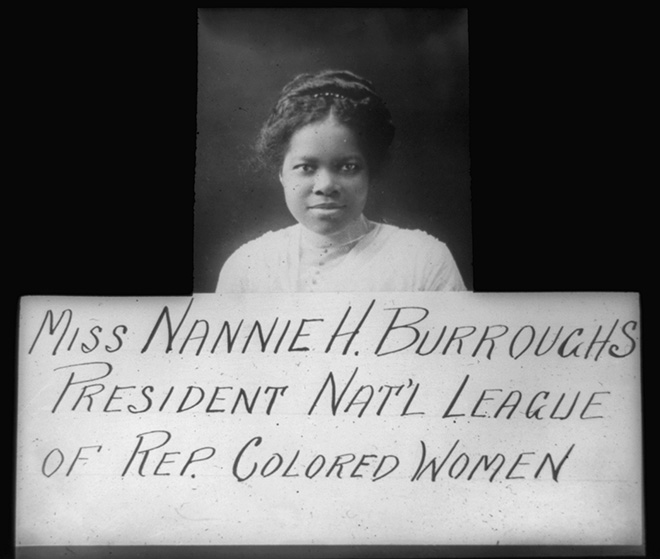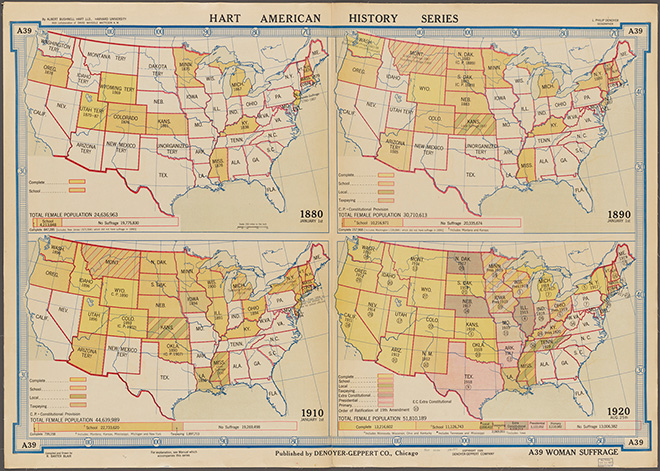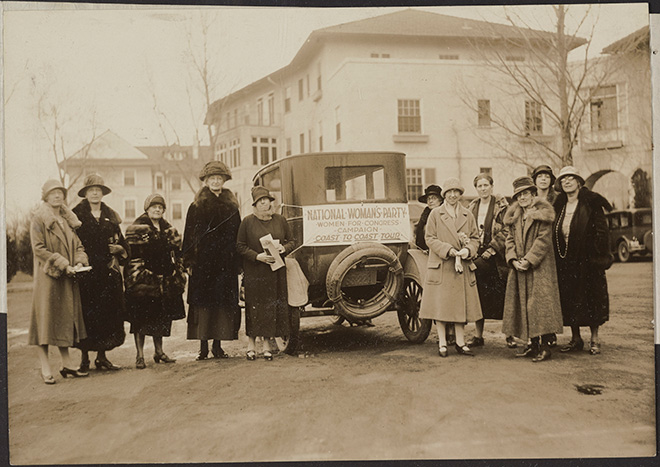
House and Senate Passage Leads An Exhausting Ratification Campaign
I wish you to know what faith is reposed in you, and how earnestly twenty million women are waiting for political freedom.
—Jeannette Rankin, 1918
Continued demonstrations and public sympathy for suffrage prisoners became a liability for the Wilson administration. The NWP’s dogged protests along with years of intense lobbying by the NWP and NAWSA and a last-minute plea from Representative Jeannette Rankin forced the president to support the amendment before a critical House vote in January 1918. It was increasingly difficult for him to ignore women’s contributions to the war effort and the potential impact of women voters in the upcoming elections. Opponents successfully delayed passage in the Senate, so suffragists continued to lobby, protest, and keep watch fires burning. The amendment sailed through the House again on May 21, 1919, and on June 4, 1919, the Senate, now with a Republican majority, passed it. NAWSA immediately mobilized its state ratification committees and pressed governors to convene special legislative sessions.
First Congresswoman Jeannette Rankin Lobbies President Wilson
Rep. Jeanette Rankin of Montana, left, reading The Suffragist, Washington, ca. 1917–1918. Photograph. NWP Records, Manuscript Division, Library of Congress (114.00.00)
Exhibition Items

Ratification and Beyond
I consider myself the first woman victim after the Ratification of the Nineteenth Amendment north of the Mason & Dixon Line.
—Mary Church Terrell, 1920
Within four months of congressional passage in June 1919, seventeen states had ratified the Nineteenth Amendment, but victory required another nineteen states to approve the measure. After a wild and draining campaign in Tennessee, the thirty-sixth state was won. On August 26, 1920, Secretary of State Bainbridge Colby signed the amendment into law, enfranchising millions of American women who had not previously had the right to vote. Yet this victory was limited. The amendment did not cover Native Americans, women living in some of the U.S. territories, women of Asian descent, and others excluded from obtaining citizenship. In addition, many African American women were systematically prevented from voting, notably in the South, until the civil rights movement in the 1960s. Extending women’s rights, through educated use of their votes and efforts to pass an equal rights amendment, began immediately after ratification and continues to this day.
“The Colored Women of the South Will be Shamefully Treated”
Harris & Ewing, photographer. Mary Church Terrell, between 1920 and 1940. Prints and Photographs Division, Library of Congress (130.00.00)










